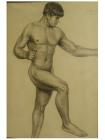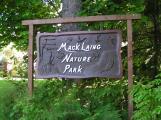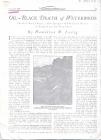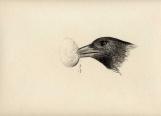2
In Laing's visual art as in his writing, he was a realist – that is to say, he believed in keeping the human, interpretive element to a minimum. Painting and writing should be strictly representational, faithful to the truth of reality as it presents itself.3
Charcoal drawing of a male nude, done by Laing while at the Pratt Insititute.1915
Drawn in Brooklyn, NY, USA

4
Needless to say, this led Laing to strongly dislike such modern artistic movements as Impressionism, Post-Expressionism, Cubism, and so on, which had founded themselves on a philosophical rejection of the extricable human observer, and had turned instead to an exploration of consciousness and perception. Marcel Duchamp's "Nude Descending a Staircase" was met with particular disfavour by Laing when he saw it in a New York gallery.6
An article by Laing, which appeared in the ''Canadian Geographic Journal'' in April 1937.April, 1937

7
In Laing's later writing, however, his realism became more pronounced. This may well be due to the influence of naturalists such as John Burroughs and Theodore Roosevelt, who denounced "nature fakers" who were unfaithful to the truths of natural history.8
Laing was also wrapped up in a controversy between competing schools of naturalists – that is, the newer protectionist school vs. the older "frontiersmen" naturalists. Laing belonged to the older group, who had not grown accustomed to the "reproduction balances predation" theories, which were espoused by the younger camp.10
Growing up on his parents' farm, Laing had been given the role of "game warden", in charge of killing predators and protecting the crops and livestock. Thus Laing grew accustomed to seeing nature as composed of desirable birds and undesirable birds, good and bad. Laing incorporated this into a larger vision of the interplay between humanity and nature.11
Photograph of Mack Laing Nature Park in Comox, BC, Canada.20 August 2003
Comox, British Columbia, Canada

13
What is perhaps striking is that Laing's aesthetic philosophy of realism would seem to contradict his perceptions of the large predator birds as vicious or wicked. Far from eliminating the human, interpretive element from his observations, Laing was instead injecting a moralistic dualism into his accounts of the natural world.14
An article of Laing's which appeared in 'Forest and Outdoor' magazine.February, 1929
Comox, British Columbia, Canada




